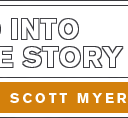Member-only story
Why Your Brain Loves Good Storytelling
Part 3: “Every storytelling exercise should begin by asking: Who is my audience and what is the message I want to share with them? Each decision about your story should flow from those questions.”

In Part 1, we considered a Harvard Business Review article about the influence of stories on the brain, how much of it apparently boils down to the reaction of a chemical called Oxytocin.
In Part 2, we considered additional chemical reactions in the brain related to storytelling: Cortisol during tense moments, Oxytocin which promotes a sense of connection to what is happening in the story, and Dopamine which makes us feel more hopeful and optimistic. So a new way of thinking about Three Act Structure:
Empathy [Oxytocin]: Establish a point of emotional resonance with characters.
Tension [Cortisol]: Create a dilemma that arouses disunity.
Release [Dopamine]: Resolve the dilemma that brings about unity.
Which leads us to another Harvard Business Review article: How to Tell a Great Story. Here are some tips:
Start with a message
Every storytelling exercise should begin by asking: Who is my audience and what is the message I want to share with them? Each decision about your story should flow from those questions.
Mine your own experiences
The best storytellers look to their own memories and life experiences for ways to illustrate their message. What events in your life make you believe in the idea you are trying to share?
Don’t make yourself the hero
That said, don’t make yourself the star of your own story. You can be a central figure, but the ultimate focus should be on people you know, lessons you’ve learned, or events you’ve witnessed. And whenever possible, you should endeavor to “make the audience or employees the hero.”
Highlight a struggle
A story without a challenge simply isn’t very interesting. “Good storytellers understand that a story needs conflict.” Don’t be afraid to suggest the road ahead will be difficult. “We actually like to be told it’s going to be hard.”

